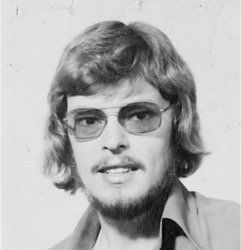OUR ROUTE
Our Route
HOW DID WE GET THERE?
We turned left at Calais and continued East until we reached Tibet!
FERDI OUR TRUSTED VW KOMBI, TOOK US 26,041 km THROUGH 15 COUNTRIES
We had very few problems with Ferdi, although tragedy occurred on the corrugated desert roads in Pakistan when our cassette player destroyed my favourite Pink Floyd album, "The Dark Side of the Moon".
There were only two pieces of equipment that we needed to have repaired or fabricated while on the trip. These were a metal windscreen guard and a replacement dynamo pulley.
The windscreen guard. This was
needed to protect our windscreen from stones thrown by children and adults; a practice that became an art form in eastern Turkey. A favourite trick was for a child to herd sheep or goats into the road when they saw a foreign vehicle approaching. Then, as you slowed down and came alongside what seemed to be an almost biblical scene, an older person would emerge and threaten to break your windscreen with a rock unless you threw baksheesh in the form of money, cigarettes or sweets.
Although a little scary, it was hard to blame these people, as few had clothing or shoes suitable for the harsh freezing conditions. A simple, yet effective solution, was to protect your vehicle's glass windscreen with a secondary screen made from metal mesh and supported by a metal frame mounted some 10 cms in front of the glass windscreen.
I first tried to have a guard made in Istanbul with the help of Sammy from The Pudding Shop, but the price of £15 seemed too high and the skill set of the fabricator too uncertain. Luckily, when we reached Sivas we met Nuri Yuzbasioglu the manager of a local Turk Petrol station. Nuri desperately tried to persuade us to turn back, as he said the mountain pass to the East was far too dangerous to cross due to snow and bandits.
However, we had left the UK, our families and our jobs, had travelled thousands of miles, so what was the point of turning back now?
After realising how stubborn we were, Nuri took us to meet his family and then to enjoy the pleasures of a genuine Turkish Bath. Gail was taken by Nuri's sister to the local women's Turkish Bath, while Nuri took me to the one for men. From comparing our accounts of our adventures in the Turkish Baths it seemed that the men had the best and cleanest facilities.
Nuri used his local knowledge and contacts to help me have a very elegant windscreen guard fabricated locally. This consisted of a metal frame covered in steel mesh and hinged from Ferdi's roof gutter. In the down position it was held in place by bungee cords attached to the front bumper. When not protecting the screen, it could be hinged upwards completely out of the way.
I remain in contact with Nuri via Facebook more than 42 years later.
Broken generator pulley.
For some unknown reason, Ferdi's generator pulley became distorted and shattered into many pieces as we drove from Esfahan to Kerman, across Iran's Great Salt Desert.
A rotating dynamo is essential for an air cooled VW engine, simply because the dynamo is directly coupled to the engine's cooling fan. If the generator does not rotate, the fan will not rotate and the engine will overheat and seize in minutes.
After remembering some of my electrical engineering theory (Thevenin's Right and Left Hand rules) I was able to rewire the dynamo as a motor. This meant I could use our spare battery to power the generator, which now wired as a motor, would rotate the fan and keep the engine cool. I calculated that we had about 2-3 hours of power to operate the fan before the battery died and the engine overheated.
This temporary fix worked well and we made steady progress before unexpectedly coming across a beautiful desert village landscaped with rose bushes, trees and fountains.
We quickly made friends with a group of local children, who then led us to their village blacksmith. He was a gentle giant of a man with a thick black beard and a huge grin of gold teeth. In the intense afternoon heat the blacksmith skilfully welded our broken pulley pieces back together, while no less than 30 villagers kept us supplied with thick coffee and huge lumps of translucent sugar crystals.
Job done, we were sad to leave this wonderful village, but we needed to press on to Yazd and the border with Pakistan.
On arriving at Yazd in the early evening, I met an Iranian teacher of English. This charming man sent a group of his pupils off to a 'local VW dealer', where to my absolute disbelief, they were able to purchase the latest version of the dynamo pulley. I think it cost around 2,500 Rials (approximately £17.50 in 1975) and was delighted to give the children the 500 Rials change.
Regular maintenance. During the trip I was fanatical about engine oil changes. No matter where we were, every 4,500 km I changed the engine oil. I also checked the fan belt and oil filled engine air intake cleaner every 2,500 km, more frequently in dusty desert conditions. Due to the harsh conditions of the corrugated roads from Iran onwards, I also fitted inner tubes to all five wheels. My idea was that tyres with inner tubes were less likely to deflate, than tubeless tyres when travelling at speed over corrugated roads. After crossing thousands of kilometres of desert roads in Iran and Pakistan, I only needed to fit replacement shock absorbers and I never experienced a completely flat tyre .

